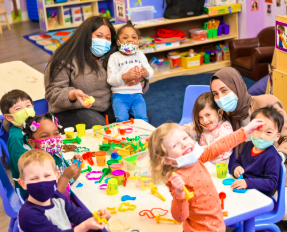Creating a welcoming and inclusive early learning environment helps children appreciate differences and develop respect for others from a young age. Celebrating diversity in early education not only fosters a sense of belonging but also encourages curiosity, empathy, and open-mindedness. Here’s how educators and caregivers can thoughtfully introduce and honor diversity in their classrooms.
1. Reflect Diversity in the Environment
Start by ensuring that classroom materials, such as books, posters, dolls, and artwork, represent a wide range of cultures, languages, family structures, and abilities. Seeing familiar and unfamiliar identities reflected around them helps children feel included and learn about others in a natural, respectful way.
2. Include Culturally Diverse Stories and Songs
Integrating multicultural books, songs, and storytelling activities into your weekly plans introduces children to different customs, traditions, and ways of life. Choose materials that celebrate a variety of cultures positively and authentically, encouraging discussion and curiosity.
3. Encourage Family Participation
Invite families to share traditions, foods, stories, or songs from their own cultures. This not only brings the community into the classroom but also helps children see diversity as something personal and meaningful. Simple show-and-tell moments or cultural celebration days can be a joyful and educational experience.
4. Use Inclusive Language and Practices
Model inclusive and respectful language when talking about people, families, or traditions. Avoid assumptions and use terminology that honors children’s identities. Embrace different learning styles and backgrounds by offering varied ways to explore and engage in activities.
5. Celebrate Differences Every Day
Rather than limiting diversity-related activities to a single event or month, weave inclusion into everyday learning. Talk about different holidays throughout the year, discuss unique traditions, and highlight the beauty of individual expression during daily routines.
6. Support Social and Emotional Growth
Help children build social-emotional skills such as empathy, active listening, and cooperation. Encourage them to express feelings, ask questions respectfully, and work together across differences. These skills are essential for navigating a diverse world.
7. Provide Age-Appropriate Conversations
When children ask questions about differences in appearance, language, or customs, respond with honesty and positivity. Offer clear and age-appropriate explanations that encourage respect and discourage stereotypes or exclusion.
Final Thoughts
Celebrating diversity in early learning settings is not about a checklist of cultural facts—it’s about creating a space where every child feels seen, heard, and valued. When children grow up in environments that honor all kinds of people and experiences, they are more likely to become kind, thoughtful, and inclusive individuals.


